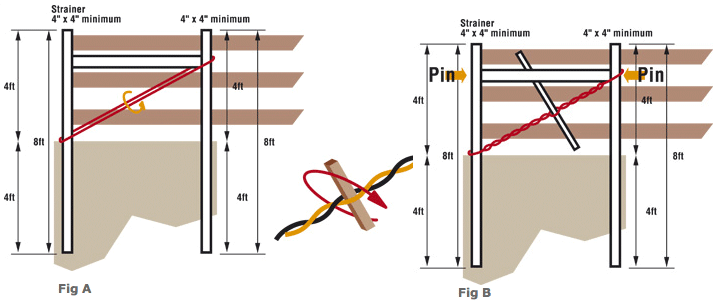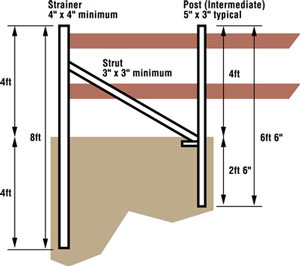Studrail is a high tension horse fence that has the traditional look and visual appeal of wooden post and rail but the strength and flexibility of high tensile wire
The key to an effective tension fence is high-tensile wire that is able to withstand constant fence tension, as well as tension increases due to animal impact or even cold-weather contraction. It is worth noting that all high-tension fences are constructed of high-tensile wire but not all fences made of high-tensile wire are going to be high-tension fences.
Tensile and Tension
“High-tensile” refers to the wire’s strength. “High tension” refers to its tautness—great enough so that the wires can’t be easily pushed apart and in the event of an impact they will snap back to the original position. Studrail uses Tinsley “Sentinel” which is a high tensile 2.50mm galvanized fencing wire to B.S.4102:1990
Bracing
The high-tensile wire inside the Studrail is strung between key posts that form the fence’s foundation. These are the anchor or brace posts located at each end of a fencing run. These anchor posts must be braced so they can resist the strong pressure which is exerted by the tensioned wire. Don’t forget that this tension will be multiplied by the number of wires in the fence.
Two Forms of Studrail Bracing
These are two methods that will provide good support for your Studrail horsefence. If they are well constructed they will keep your fence strong (and looking good) for many years to come.
The New Zealand Brace
Steel pins should be inserted to hold the crossbar.
Use plain fencing wire to tension and tighten with a stick.
Traditional Diagonal Strut
The alternative method to ensure the construction of strong end strainers necessary to hold the high tensile wire within Studrail is by means of a diagonal strut system.


